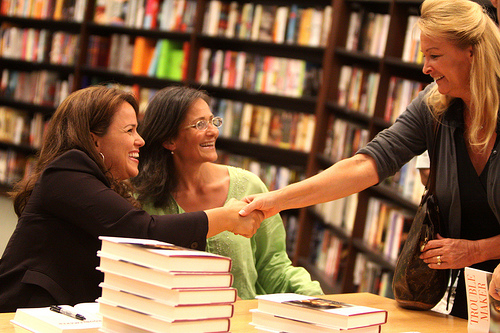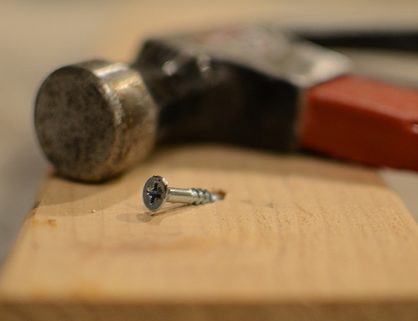When Slow Writing Leads to Great Writing
Today’s guest post is by Tara East.
Our lives are busy and they’re just getting busier. We’re desperate for tips about time management, scheduling, prioritization, and optimization. We want life hacks and shortcuts. Technology has eliminated some of the tedious domestic tasks that consumed our time and zapped our energy, yet we’re still complaining about being time poor and exhausted.
These days, we expect more from life and ourselves, but creatives can find this approach rather distressing.
A schedule is a great way to see the week ahead at a glance. And time blocking can help you set realistic goals and expectations, especially once you start allotting time to the things that matter: writing, work/study, exercise, and leisure.
But time management, tight scheduling, deadlines, and optimization tactics can quickly become problematic, because—let’s face it—there is nothing efficient about creating art.
While maintaining a weekly schedule may better your chances of completing big goals and reaching deadlines, it is also important that you hold these guidelines lightly.
After all, how else will the muse find you?
If you’ve been on the productivity hamster wheel for a while now, the idea of slowing down and taking your time may feel perplexing or even frustrating. But if you give yourself the permission to slow down and to daydream, you never know what literary gold your subconscious may dig up.
Give Yourself Permission to Wander
Think of a schedule as a trail map. It can lead you up the mountain, but it’s also important that you pay attention to your immediate surroundings. If you spot a narrow path through the bushes, give yourself permission to wander along that alternative route. Who knows? You may find another, even better view.
If you typically write following a strict outline, consider putting the outline in a drawer and freewriting awhile.
Maybe you have a character from a previous scene who you found really interesting and you’d like to spend a little more time with. Maybe there’s a romantic subplot you need to flesh out, even if it’s only for your understanding of how or why these two characters find each other attractive.
Not everything you produce has to be publishable, and not everything you produce is going to get published. So why not take some time to write a scene with a minor character who has piqued your interest. Sometimes these relaxed exercises can spark new ideas that do become relevant to the larger project.
Good art doesn’t have to take a long time, but it often does.
For some, writing is an act of perseverance and constant dissatisfaction. For others, it is joyful and energizing. The thing that connects these two points of view is discipline—because good art takes time.
Although you may studiously research and construct a careful outline before you start writing, the truth is we often don’t know what we are doing until we start actively engaging with the project.
People may not think that writing is a tactile act, but it is. Planning and outlining is helpful, but we often can’t “see” our story until we’re actually writing it.
Rather than following a strict outline, we can instead allow our feelings and our sense of what we are trying to accomplish to tow us toward the watery image contained in our mind’s eye. It is through the act of writing that this image gathers shape, constructing its own body, and, consequently, a will of its own.
Let the Story Take the Lead
It’s important to hold your outline and intentions for a novel lightly, because a story can have a mind of its own.
Some authors work tediously on an outline that they then follow to a T; others may mentally map out their entire plot ahead of time so that their writing sessions feel more like dictation rather than creation.
An alternative approach is to let the story come out as it wants to come out.
Outlines are useful and they can save you a lot of time, but if you’ve been a reader for a long time, then you already have an innate understanding of narrative structure.
Have confidence in your subconscious and in your story.
Sometimes it’s helpful to open your document and let the story tell you where it wants to go. Switch off your analytical mind and allow the next scene to occur organically.
When we create from a relaxed state, we often come up with better ideas or notice previously unseen connections. You may get the sudden idea to bring back a minor character from an earlier chapter, or a previously unseen plot hole may come to your attention.
If freewriting isn’t your style, you can always spend five minutes constructing a mini-outline prior to starting your writing session. That way, you have a general idea of where you’re going, but you’ve also allowed space for spontaneity.
Revise Slowly
It’s okay to take your time during the revision process.
Words that are easy to read are rarely easy to write. So take your time to think and write slowly.
Revise your manuscript in layers so that each pass has a specific purpose. Often, a first draft is primarily concerned with plot. Ask yourself:
- What are the story beats?
- What is happening here, to whom and why?
- Is this event moving the plot forward, showing character or adding flavor to the narrative?
Later revisions can then focus on other story elements such as character arcs, mood, theme, symbols, voice/style, tension, and pace.
Again, give yourself permission to approach this part of the writing process slowly. After all, there are few areas in life where we allow ourselves to be slow.
While the practice of slow writing is at odds with the current work culture, it is vital that creatives give themselves the permission to approach their art at a pace and within a time frame that suits both them and their current writing project.
Good art takes time, so don’t be afraid to slow down and meander. Chances are the final product will be all the better for it.
 Tara East holds numerous academic degrees in journalism and creative writing. Her nonfiction pieces have appeared The Cusp, The Huffington Post, Queensland Writers Centre and The Artifice. Her fiction has been published in October Hill magazine and TEXT journal. In 2017, she was shortlisted for The New England Thunderbolt Prize for Crime Fiction.
Tara East holds numerous academic degrees in journalism and creative writing. Her nonfiction pieces have appeared The Cusp, The Huffington Post, Queensland Writers Centre and The Artifice. Her fiction has been published in October Hill magazine and TEXT journal. In 2017, she was shortlisted for The New England Thunderbolt Prize for Crime Fiction.












“… writing is a tactile act…” I never thought of it that way, and yet — so true. I do love to outline, but I also tend to overthink things. You can only “think” a story so far. I tend to bounce between plotting and pantsing.
Anyway, lots of nuggets of truth in this post. Thanks for making me feel a little less guilty about taking my time with my current story. I want it to be the best thing I’ve written yet.
Hi Karen,
I’m so glad that this article alleviated at least some of that writerly guilt. Us creatives seem to have a strange relationship with emotion. We feel guilty when we’re not working and we feel guilty when we are!
I’ve met quite a few authors who describe themselves as ‘plotsers’, meaning that they outline their novels, but they also leave room for the story to take over and go in new directions. Writing is so different from ‘thinking’ about writing. A romance subplot may seem believable and organic when you first devise it in your outline, but then come across as forced and wooden when ink meets page. Writing is such a fascinating and complicated practice. I suppose that’s why we do it!
Tara, I’m a “plotser” with a structured outline, but a romantic sub plot “appeared” and surprised me how well it fit into the story. It’s a historical fiction and the added romance has lifted the details to a new level. Sometimes it works! ?? Christine
Valuable insights. Thank you. I was especially intrigued by the observation that writing “is a tactile art.” Fascinating!
This is the best writing advice I’ve seen in a long time. It is completely in line with how I think of writing. We have to be fully present in order to allow the story to come to us.
Hi Gillian,
Thank you for the comment and the compliment! I think creatives put far too much pressure on themselves and their work in the name of ‘productivity’ and ‘efficiency.’ I’m so glad that this post resonated with you! Keep writing!
Very helpful advice and which I can relate to. For my book which is on the production line as we write, I started with a concept and general idea, but it was not until I started to ‘meander’ that the whole thing began to materialise. Of course in the revision process the narrative began to gain clarity – here I like your comparison with the visual arts, as I am also an artist and can draw parallels with both the process of writing and of making a painting or drawing.
Hi Susannah,
Congratulations on the pending publication of your book! How wonderful. I’m also very glad that you enjoyed the post and the comparison between writing and the visual arts (I too am a painter). When we allow our mind to relax and release our tight grip upon the steering wheel, it is astounding the revelations that can happen. A lot of studies have proven that creative thinking is improved when walking — especially in nature — as our mind are able to relax in a way that the simply can’t when we’re actively trying to solve a problem or create something (which is somewhat similar to problem-solving).
Tara
‘Have confidence in your subconscious and in your story.’
This is so wonderful to see in a craft post. I call it my compost pile, and it is a fitting analogy to what this post is about – there is a hot mess of stuff gathered over time, piled in a heap, and left to become something fertile. Something WILL grow, but what exactly, and when, well, that’s up to the specific conditions of the heap. But you can guarantee that something will grow, and it will be robust.
Hi Katinka,
Ann Patchett uses a similar metaphor when describing where ideas come from. She says that our minds are a compost of information where the things we read and watch, the conversation we have, our thoughts, observations, experiences and reflections all compile in our mind and it is from here that ideas are grown. The caveat, of course, is to be careful what you put into your head!
So happy you enjoyed the article!
Best advice I’ve read in a while. Thank you.
Oh wow! Thank you very much, Connie. I am so pleased that you connected with this piece. Happy writing!